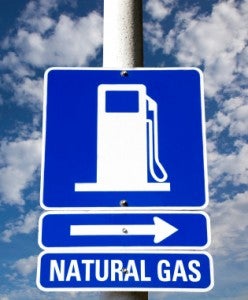This commentary was originally posted on the EDF California Dream 2.0 Blog.
Energy powers our economy. But our outdated energy system is wasteful, expensive and a major source of pollution, leading to the deaths of approximately 60,000 Americans per year. Utilities in California and across the country are now investing billions of dollars to modernize that infrastructure, making use of the information technologies that have revolutionized so many other realms of our lives. The smart grid they’re building will improve air quality and the health of millions of Americans affected by air so dirty it is often dangerous to breathe.
Smart meters are a key component of the smart grid. They unlock air quality, climate pollution and public health benefits by enabling two-way, real-time communication that gives households, small businesses, manufacturers and farmers (and the utilities that serve them) the data they need to cut energy use and electricity costs. These devices help ensure that every day energy users reap the many benefits of the smart grid.
Yesterday, the California Public Utilities Commission (CPUC) approved a proposal by Pacific Gas & Electric (PG&E) that allows customers to keep their analog meters and opt out of using the new wireless smart meters. This decision is designed to address concerns of individuals who describe themselves as having electromagnetic hypersensitivity to radio frequencies (RF), and report getting headaches, fatigue, nausea and insomnia from exposure.
The radio frequencies used by smart meters are now pervasive in our lives, emitted by our cell phones, microwaves, baby monitors, and numerous other devices we use daily. To understand the potential health risks associated with use of these devices, EDF has completed a thorough review of the scientific literature on the potential effects of electromagnetic and radio frequencies (EMF/RF) on human health. We have reviewed reports from the World Health Organization (WHO) and the California Council of Science and Technology (CCST). We also consulted with outside experts, including Dr. Leeka Kheifets, a Professor in Residence at UCLA who sits on the Standing Committee on Epidemiology for the International Commission on Non-Ionizing Radiation Protection.
The WHO review states that “in the area of biological effects and medical applications of non-ionizing radiation, approximately 25,000 articles have been published over the past 30 years. Scientific knowledge in this area is now more extensive than for most chemicals.” These studies, it concludes, find that “current evidence does not confirm the existence of any health consequences from exposure to low level electromagnetic fields.”
The WHO assessment spotlights the importance of conducting rigorous scientific research to evaluate environmental and health problems, a core principle of EDF. Our policies are based on the best available science and are altered as necessary when new evidence comes to light.
This research helped inform EDF’s position that the limited RF exposure levels associated with smart meters should not result in reduced support for the smart grid, especially in light of the significant health benefits it will deliver by enabling far less use of fossil fuels and far greater reliance on clean, renewable energy, including small, community-based generation like rooftop solar PV.
Today’s ruling strikes the proper balance: sustaining progress toward a smart grid with its multiple public health benefits while addressing individuals’ concerns. It gives consumers the same type of choice about what technologies to use in their everyday life.
We support the PUC’s decision and continuing research on the possible health effects of radio frequencies.
For more information on this topic, please see EDF President Fred Krupp’s memo on “Health and the smart grid.”











